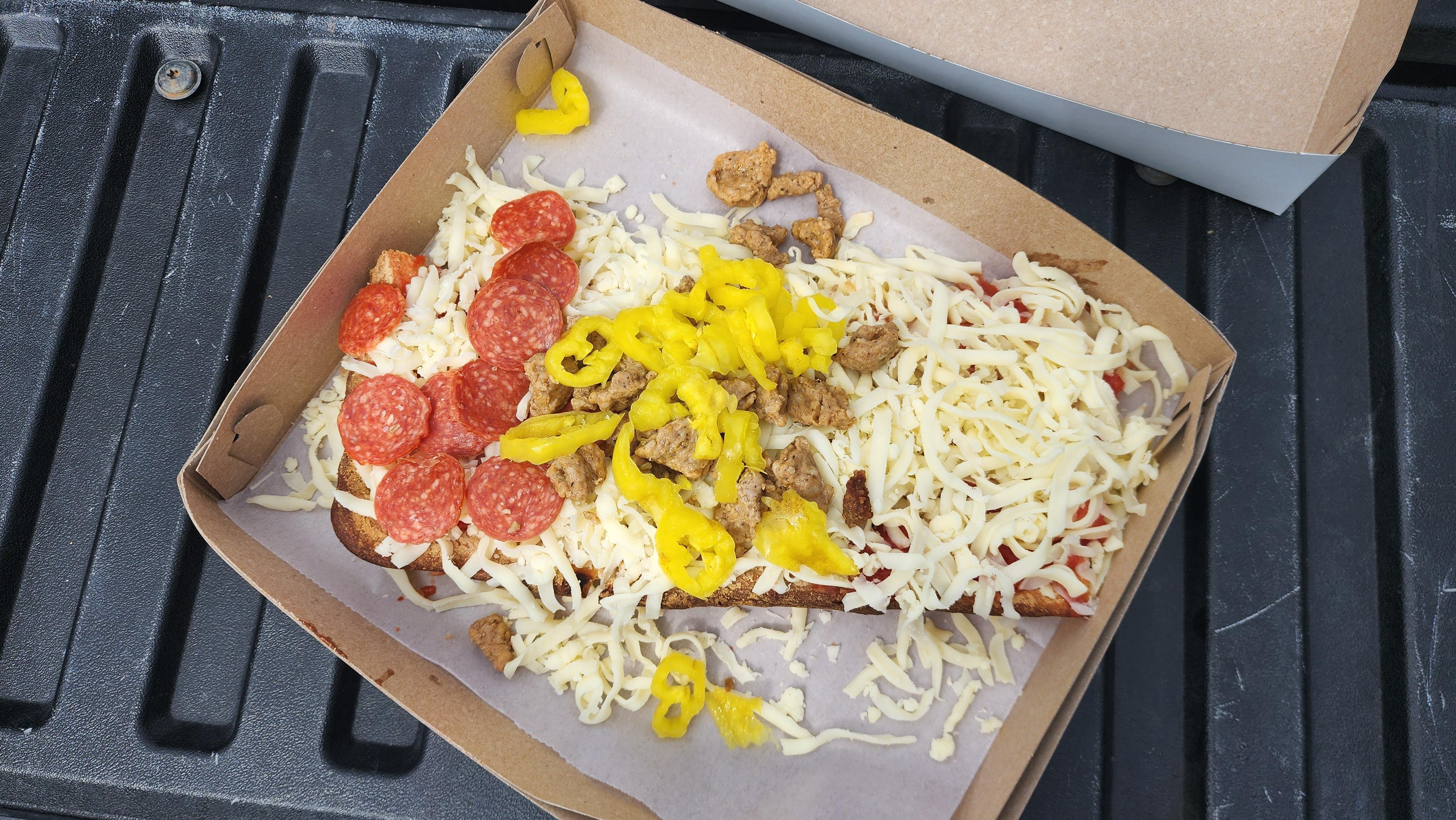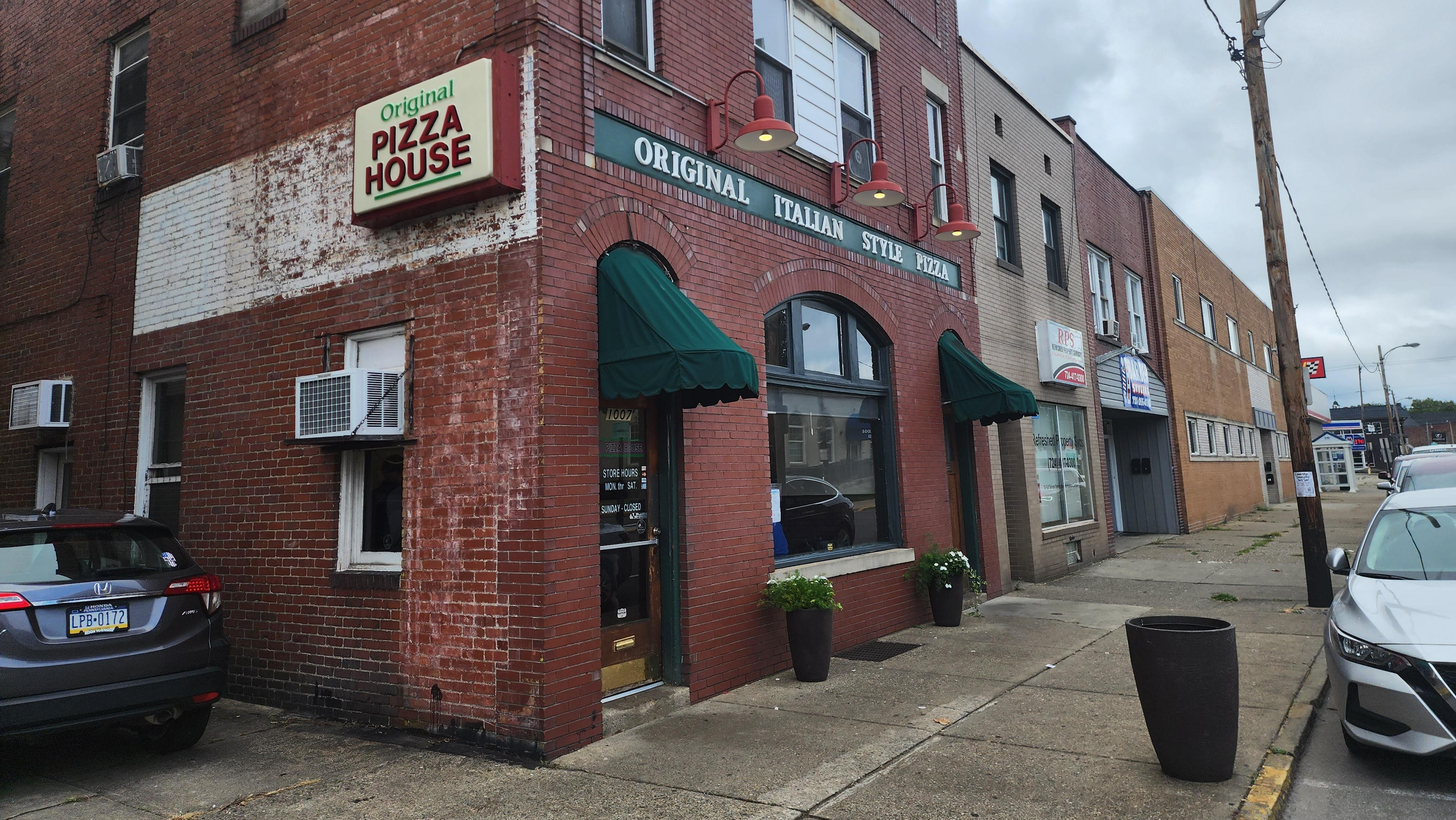Why The Ohio Valley Dumps Cold Cheese On Warm Pizza
Ohio Valley pizza has carved out a niche in parts of Appalachia—but why not bake the cheese?
Controversial, highly regional pizza styles run wild throughout the United States. Colorado-style, with its doughy, braided crust and packets of Kraft honey, is something of a dud. Iowa's taco pizza certainly has its fervent defenders. Altoona Hotel pizza questions the very nature of pizza itself. And in a similarly genre-defying category you'll find Ohio Valley pizza, a grandma-style pie served in square slices, topped with cold cheese and cold toppings.
A brief history of Ohio Valley pizza
Ohio Valley pizza is a certified style by way of Steubenville, Ohio, with origins in a pizza parlor named DiCarlo's. Though this article seems to suggest that cold cheese pizza was born 40 years ago in Oneonta, New York, the story surrounding DiCarlo's certainly predates Tino's.
PMQ Pizza Magazine (that's right, a pizza magazine) outlines the origin story:
The story of Ohio Valley-style pizza, or Steubenville-style pizza, began in the early 1900s. Michael and Caroline DiCarlo were running an Italian grocery store in Steubenville, Ohio, that gradually transitioned into a bakery business, serving up their Original DiCarlo's Famous Bread, according to DiCarlo's Original Pizza co-owner Anna DiCarlo, Michael and Caroline's granddaughter.
When the DiCarlos' oldest son, Primo, returned home from World War II, he told his parents all about a popular dish in Italy that had crispy bread topped with sauce and cheese—pizza! It didn't take long for DiCarlo's to start making pizza using a recipe similar to its famous bread recipe, DiCarlo says.
Post-WWII certainly beats Tino's, but there isn't exactly a race to claim first, either. What's most interesting isn't who invented this peculiar style of pizza, but why cold cheese defines the style.
Today, DiCarlo's has multiple locations in Eastern Ohio and West Virginia. Cold cheese pizza is found at multiple institutions in Pennsylvania as well, including Sam's (in Canonsburg), Osso's (in Washington), Police Station Pizza (in Ambridge), and Beto's (in Pittsburgh), among many, many others.
At worst, cold cheese pizza is harshly likened to an undesirable, cheaply made Lunchables style pizza. To many of its fans, though, there's nothing more comforting than cold cheese and cold toppings on warm, square slices.
So, why cold cheese?
The question of how freshly shredded cold cheese ended up on warm pizza is one without firm answers, but surely at its core lies some measure of practicality. Per PMQ again:
"I don't know why they put the toppings on last," DiCarlo says. "It's just the way we've always done it. I think that, back then, because they were using thicker baking pans, the cheese may have burned if they put it on before baking."
Interestingly, this rationale is concerned with the cheese burning, while Tino's in New York state is more concerned about tongues burning. Owner Tino Garufi says cold cheese was initially meant to prevent the customer from having to wait for their pizza to cool down, lest they burn their damn mouth. As Garufi told PMQ,
"What would happen would be, the line would form so long and we were selling the pizza so fast — once it was coming out of the oven, the pizza was already being sold. So it was like piping hot. It was being cut and then onto a plate, and then they were eating it."
At Pizza House in Ambridge, Pennsylvania, a restaurant often referred to as Police Station Pizza (housed in a former police station), the pizza has a hybrid of hot and cold toppings. When doors open at 4 p.m., the place fills with customers immediately, and nothing but plain cheese pizzas are fired in giant square sheet trays. On these pizzas, the cheese is cooked in the oven, unless ordered uncooked, and the finished pies are brought to a big wooden prep table where they're cut into square slices. When you get to the counter, you specify which toppings you want besides cheese, and those get slopped onto the pizza cold. Police Station Pizza isn't in the business of baking individual speciality pies like pepperoni, sausage, or veggie; they just bake the pizza squares then sort out the rest with the customer. It's a little chaotic, but it works.
Whether this process is actually any simpler than just baking a bunch of uniquely topped pizzas is unclear. But in a relentlessly busy restaurant like Toni's or Police Station Pizza, who's to question the method of their success? To skeptics, a pizza with cold toppings and cheese might appear lazy. To the restaurants that serve it, however, it's a way to streamline operations and give everyone what they want as quick as possible.
As mentioned, at Police Station Pizza, if you want uncooked cheese, you have to specify that upfront, which I didn't know until after I'd ordered. As a result, my pizza came with hot cheese and cold toppings.

I enjoy cold pizza as much as the next guy, but warm pizza and cold piles of pepperoni is a tough sell to the uninitiated. When pepperoni cooks, the fat releases into the pizza, resulting in that fuller, oleaginous taste we all know and love. To skip out on this awesome part of the experience isn't just unusual, it's a little infuriating. Cold pepperoni and warm sauce is odd at best, and downright blasphemous at worst.
Over at Beto's in Pittsburgh, the cold shredded provolone and toppings completely mask the pizza crust itself. The tomato sauce is quite chunky, almost like a pomodoro sauce, and the tomatoes appear to be of poor quality. They're extremely bitter and sour; it is decidedly not the sweet, robust flavor of a San Marzano.

The pizza itself comes piping hot, and as a result, the mound of shredded provolone actually does melt somewhat, creating an approximation of a cheese pull. The crust is sort of like a Sicilian-style pizza, but perhaps more humbly made. It's not quite as elegant as a Detroit style, since it doesn't have that salty rim of crispy cheese on the outside, nor the high-hydration dough and porous crust. However, there is something comforting about it.
This Ohio Valley pizza is more of a true Grandma-style: thick-cut, square, and relatively soft. Eating it reminds me of the pizzas I grew up eating, which were literally made by my grandma and mom. It's so simply prepared that there's an unmistakable home-cooked element to it. It won't knock your socks off, but it doesn't aim to, either.
A slice at Beto's costs $1.82. At Police Station Pizza, one slice of cheese pizza costs $1.30, and each topping is an additional 35 cents. How does one grade humble food served affordably? Maybe cold cheese and toppings on top of pizza go against all good pizza sense, but it's hard to argue with the consistent prices and overall straightforwardness of Ohio Valley pizza. In the face of rising inflation it remains a cheap, tasty stalwart and regional curiosity. In those terms, even if it is highly imperfect, it doesn't need to be changed at all.

